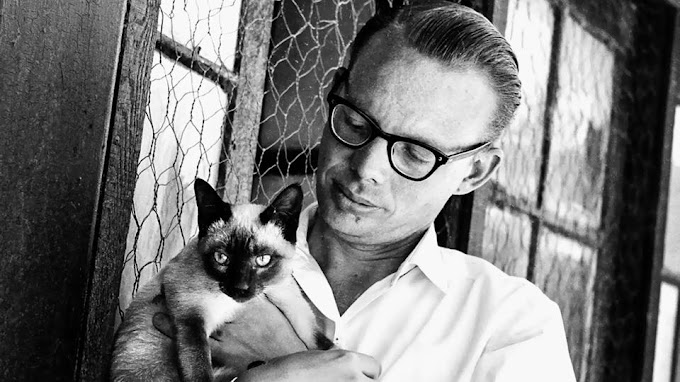The Strength Behind the Smile: Why Some People Choose Smiles Over Tears
Have you ever met someone who always seems to have a smile on their face? They’re the kind of person who brightens up a room, whose laughter is contagious, and who seems to carry an unshakeable optimism. Yet, if you look closely, sometimes you can see a flicker of something else behind that smile—an emotion they’d rather not show, a pain they’d rather not explain. These are the people who have learned that smiling is easier than explaining why they are sad.
It’s easy to assume that a smile always means happiness, but the truth is far more complex. Life is filled with challenges, heartbreaks, and disappointments that don’t always have easy solutions or simple explanations. For many, these experiences create a heaviness that’s difficult to share with others. So instead, they choose to smile. It’s a defense mechanism, a way to keep the world at some comfortable distance and cocoon themselves from having to open up old wounds.
Smiling Through the Storm: A Resilient Shield of Strength
This kind of smile is not a sign of weakness but rather of resilience. It’s a way of coping, of navigating through life’s tough moments while still trying to maintain a sense of normalcy. When words fail or when the pain feels too deep to articulate, a smile can serve as a shield. It says, "I'm okay, even if I’m not," and allows the person to maintain their composure in tough times.
The Art of Faking Fine in a World Obsessed with Perfection
But what drives someone to hide their sadness behind a smile? Often, it’s because they fear that their pain will be misunderstood or dismissed. They might worry that opening up will make them seem vulnerable or burden others with their problems. For some, it’s easier to pretend everything is fine rather than risk being judged, pitied, or ignored.
Cultural and societal pressures also play a role. We live in a world that often glorifies positivity and strength, sometimes at the expense of real emotional expression. There’s a pervasive belief that happiness is the ultimate goal and that anything less is a failure. This creates an environment where people feel forced to smile, even when they don’t feel like it, because anything else might be seen as a sign of weakness or inefficiency.
There’s also the fear of not being able to adequately explain the source of their sadness. Emotions can be complex and difficult to put into words. How do you explain the weight of a broken heart, the sting of betrayal, or the ache of loneliness? Sometimes, the sadness is so deep that it defies explanation, leaving only a smile as a way to cope.
The Hidden Stories Behind Every Smile: Unveiling the Truth Behind the Grins
Yet, behind every smile, there’s a story. It might be one of loss, disappointment, or fear. It might be the result of past traumas or ongoing struggles. But whatever the reason, it’s important to remember that the smile doesn’t diminish the reality of their pain. It’s simply a different way of managing it.
As friends, family, or colleagues, we can play a crucial role in supporting those who smile through their sadness. Instead of taking their smiles at face value, we can practice empathy and understanding. A simple check-in, a kind word, or even just being present can make a world of difference. Sometimes, people just need to know that someone cares enough to ask how they’re really doing, even if they’re not ready to open up just yet.
Embracing the Realness of Feeling Blue
If you’re someone who finds themselves smiling to hide your sadness, it’s important to remember that it’s okay to not be okay. It’s okay to feel sad, to struggle, and to ask for help. You don’t have to carry the weight of your emotions alone. There are people who want to listen, who care about you, and who will be there for you, no matter what.
And for those who might not yet feel ready to share, that’s okay too. Healing is a process, and sometimes it takes time before we’re ready to let others in. But know that your feelings are valid, and your experience is real, whether you choose to smile through it or not.
The Smile You See and the One You Don’t: Unmasking Hidden Emotions
In the end, a smile can mean many things—joy, contentment, strength, or, sometimes, sadness. It’s a powerful expression that transcends words, carrying with it layers of meaning that only the person wearing it truly understands. So the next time you see someone smiling, remember that there might be more behind it than meets the eye. And if that person is you, give yourself the grace to feel whatever it is you’re feeling, knowing that you’re not alone.
There’s something profoundly powerful about a smile. It’s a universal expression, recognized across cultures and continents, conveying warmth, friendliness, and joy. But for some people, a smile is more than just a reflection of happiness; it’s a shield, a well-crafted mask that conceals the depths of their pain. These people understand that smiling is often easier than explaining the sadness lurking behind their eyes, and in their silent strength, there is a story of resilience and courage that often goes untold.
So the next time you see someone smiling, take a moment to appreciate the courage that might be hidden behind that smile. It’s not just a simple expression—it’s a story, a journey, and a testament to the incredible power of choosing hope over despair.










0 Comments